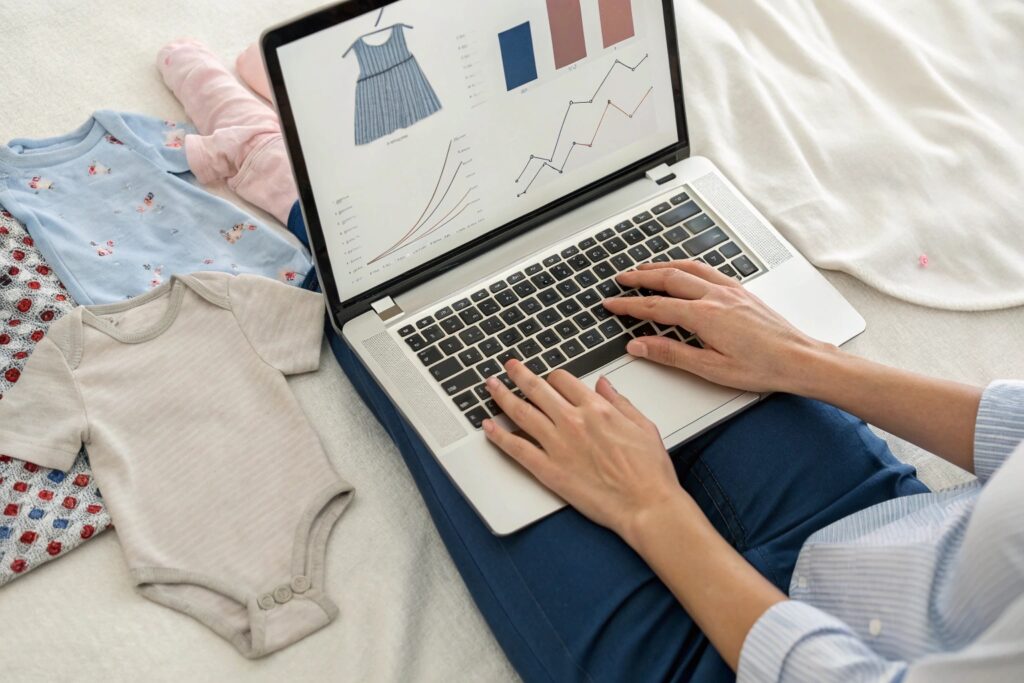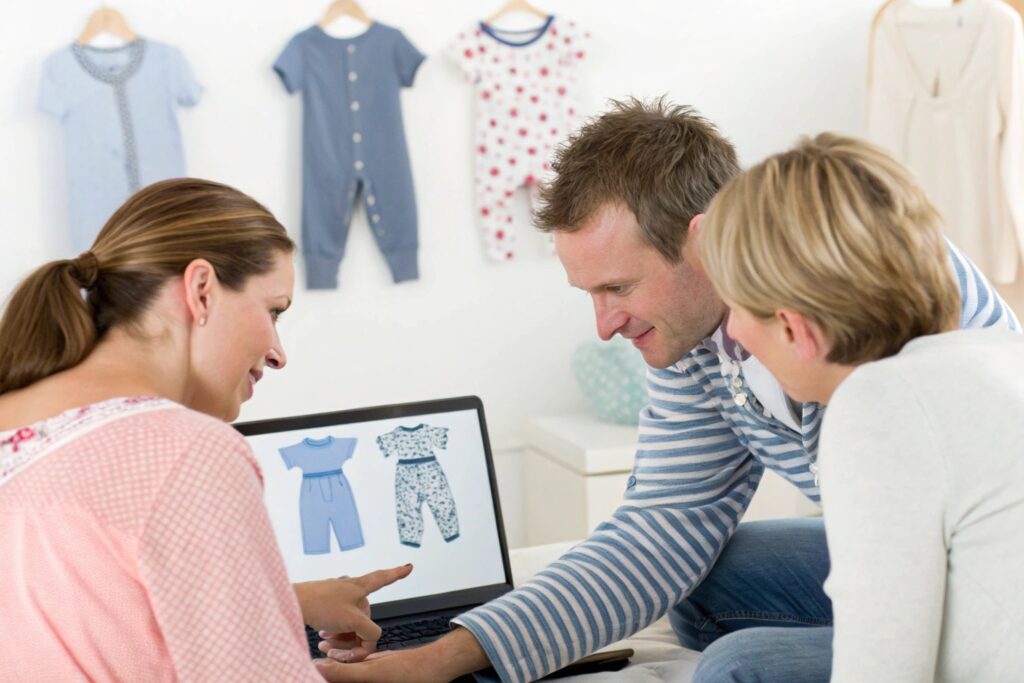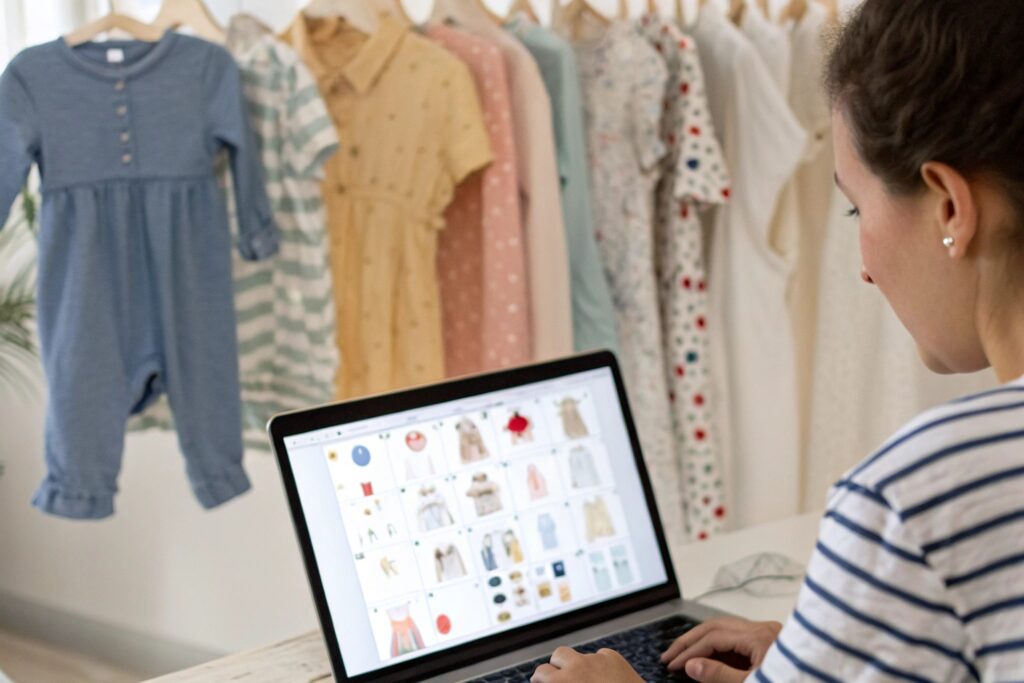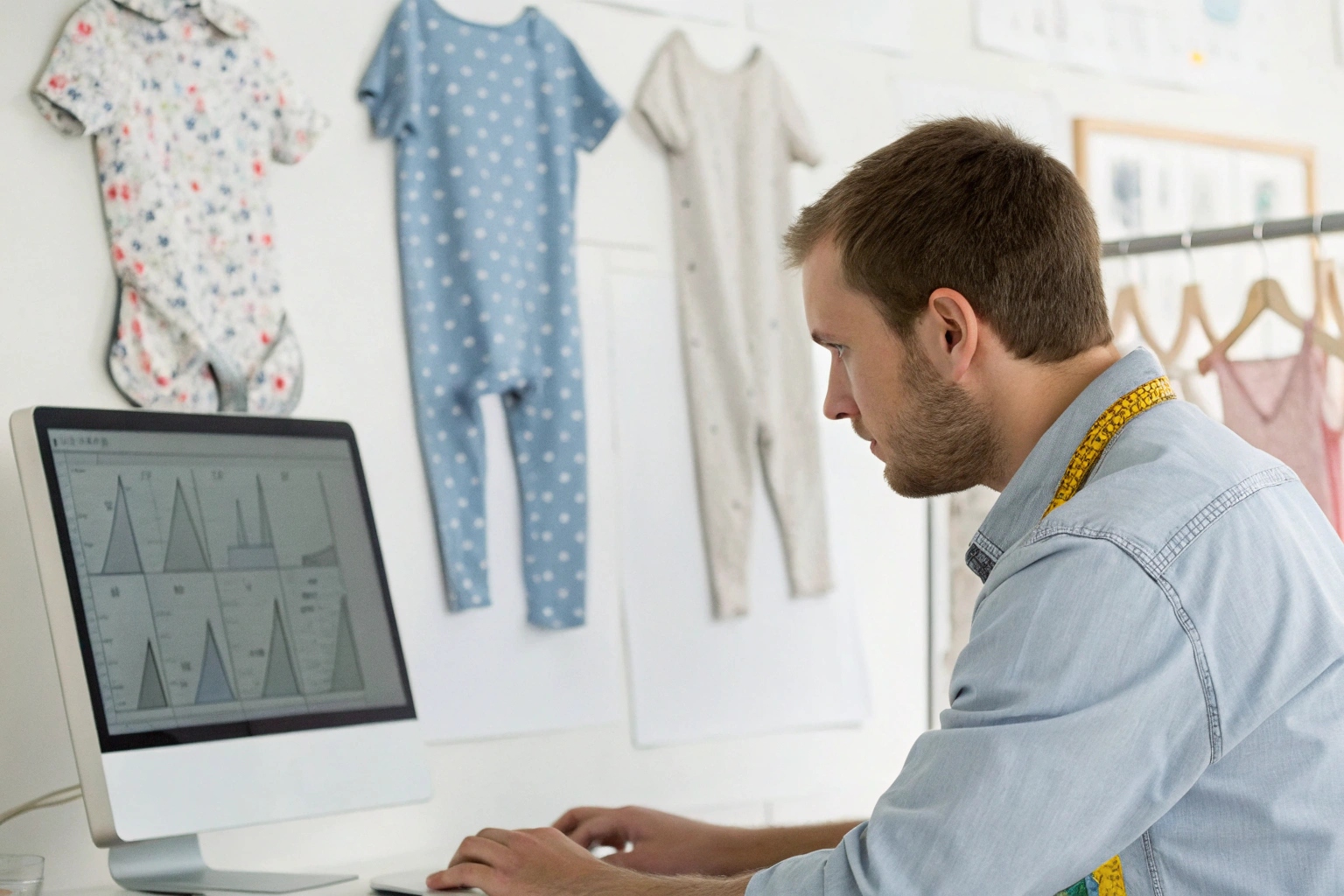In today’s competitive babywear market, brands are no longer relying on guesswork. They're using data to create better clothes—ones that fit, feel good, and actually meet real parent needs.
Babywear brands are using data—from sizing measurements to feedback and returns—to improve fit, reduce waste, and design collections that win parent loyalty.
Let’s look at how data-driven insights are changing how baby clothes are made, sold, and improved.
How Fit and Sizing Data Improve Babywear Accuracy?
Traditional sizing based only on age is no longer enough. Babies grow at different rates, and parents expect clothes that fit properly the first time.
By analyzing real-world sizing data—like length, weight, and body proportions—brands can improve babywear fit accuracy and reduce return rates.

What fit data helps improve:
| Data Source | How It Improves Babywear Fit |
|---|---|
| Body measurements by region | Tailors fit for local growth trends |
| Return reasons by size | Identifies inconsistent grading patterns |
| Parent reviews mentioning fit | Highlights problem areas like neck or crotch |
| Shrinkage rate post-wash | Ensures sizing stays accurate over time |
Instead of relying on standard “0–3M” or “6–9M” labels, some brands now offer height- and weight-based size charts or tools that recommend fit by body type (slim, average, or chubby).
At Fumao, we use fit-test feedback across different infant body shapes and feeding stages (breastfed vs. formula-fed) to fine-tune patterns before mass production.
What Consumer Feedback Reveals About Baby Clothing Needs?
Parents are not shy about sharing their opinions—especially when it comes to their baby’s comfort. That makes customer feedback a goldmine for product development.
Consumer reviews and surveys reveal what parents truly care about—whether it's scratchy seams, tight snaps, or unexpected wear and tear.

Key insights from feedback data:
| Feedback Trend | What It Tells the Brand |
|---|---|
| “Shrinks after one wash” | Fabric needs pre-washing or a size-up cut |
| “Snaps are hard to close” | Closure type or spacing needs redesign |
| “Sleeves too long” | Grading or fabric stretch needs correction |
| “Super soft and lasted months” | A winning fabric choice worth repeating |
Brands that categorize and tag reviews by feature (fit, fabric, durability) can prioritize changes that will truly improve customer satisfaction.
This kind of feedback also helps teams decide whether to update an existing SKU—or discontinue it entirely.
How Sales and Return Data Shape Future Collections?
Every order placed—and every return requested—tells a story. The smartest brands read that story to shape next season’s line.
Sales and return data help babywear brands track what’s working, what’s failing, and what parents actually want more of—driving smarter design and inventory choices.

How data informs decisions:
| Data Type | Action Taken by Brands |
|---|---|
| Best-seller by color | Expand colorways in next drop |
| Size with highest returns | Recheck fit specs or labeling |
| Items returned after wash | Improve fabric quality or shrink control |
| Low conversion SKUs | Consider style redesign or price adjustment |
Example: If size 6–9M has the highest returns due to tight leg openings, the brand might widen that measurement or swap to stretchier fabric.
At Fumao, we compile return reasons into monthly reports so our clients can act fast—before negative reviews pile up.
Using Trend Analytics to Design Babywear Parents Want?
While babywear should prioritize comfort and safety, style also matters. That’s why top brands track trends to offer collections that feel current and personal.
Trend analytics—pulled from Google searches, Pinterest pins, and social media—help babywear brands design colors, prints, and silhouettes that resonate with today’s parents.

Tools and data sources used:
| Trend Data Source | How It Influences Design |
|---|---|
| Google Trends | Shows rising color/seasonal term searches |
| Pinterest boards | Reveals pattern and styling preferences |
| Instagram hashtags | Highlights what's popular in real time |
| Retailer sell-through rates | Validates what’s selling fast |
| TikTok parenting content | Influences lifestyle-based design themes |
Current trending babywear themes in 2025 include:
- Gender-neutral color palettes (sage green, soft rust)
- Nature prints (mushrooms, suns, woodland creatures)
- Organic textures (waffle knits, ribbed sets)
- Personalization (embroidered names, birthday outfits)
Combining this trend data with past sales helps brands launch collections that are both relevant and reliable.
Conclusion
Data is reshaping babywear development—from sizing and softness to styles and strategy. The brands winning in 2025 are those using fit feedback, purchase patterns, and trend insights to make smarter clothes for growing families—and fewer returns for everyone.










